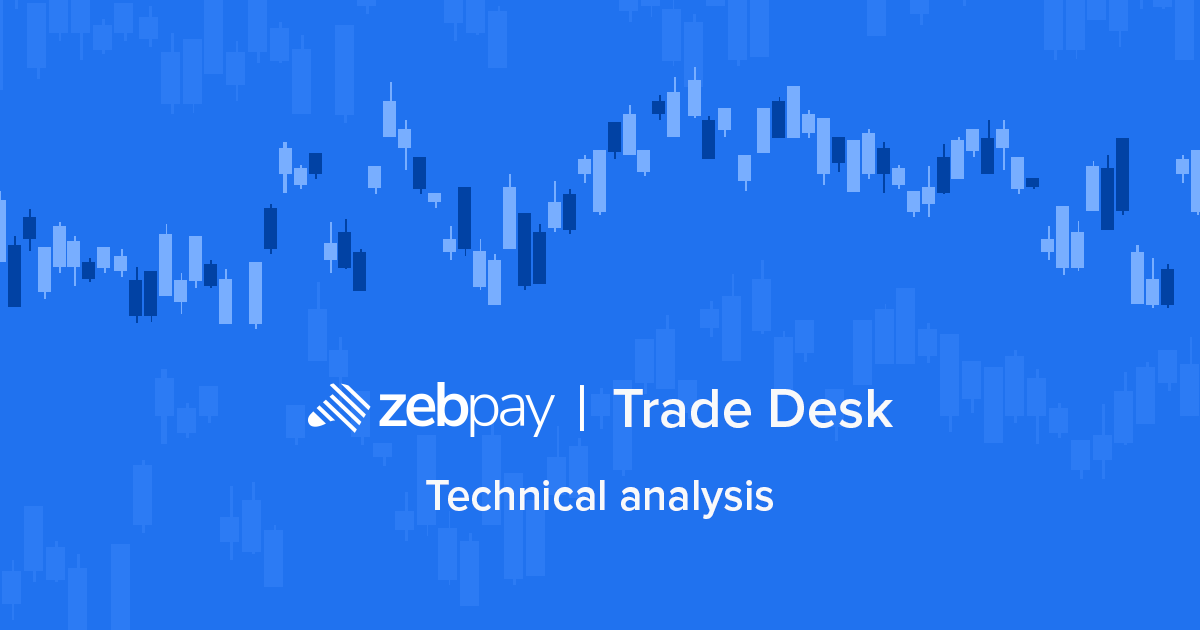09 June 2021| ZebPay Trade-Desk
The Ethereum blockchain is soon due for another upgrade, which will fundamentally impact the way in which the ETH blockchain interacts with its users. The process has already begun. The first phase, which is the beacon chain, has been live since December 2020. The next phase of the merger is set to follow soon and is likely to happen in late June/early July. The vision of Ethereum has always been to serve humanity; and this upgrade is likely to make the protocol even more secure, scalable, and sustainable.
Evolution of the Ethereum Blockchain:
Ether is Ethereum blockchain’s native cryptocurrency. It is similar to bitcoin in that it is a store of value and/or can be used as a form of payment. However, ether was created to facilitate the computation of decentralized applications on the Ethereum network. Last year, Ethereum 2.0 (Eth2) came into existence. Eth2.0 is essentially just an upgraded version of the existing Ethereum main network. It has been designed to improve Ethereum’s usage as well as its adoption by enhancing its performance, and usability. Ethereum 2.0 has been in the talks for a while in the Ethereum community. The launch of Ethereum 2.0 is significant as compared to past upgrades as the implementation will be a Proof of Stake consensus mechanism, moving the network away from its current Proof of Work architecture. ETH 1. 0, relies on a consensus mechanism known as Proof of Work to validate transactions on the network in a decentralized way. The Proof of Stake model developed in Ethereum 2.0 will replace the miners with the transaction validators. The main role of these validators is to initiate new blocks, provide storage, bandwidth and computing power to validate the transactions. The shard chain implementation provides scalability for ETH 2.0. Ethereum blockchain will split into 64 separate chains (called shard chains) that run parallel to one another and interoperate seamlessly. Sharding will allow ETH 2.0 blockchain to process multiple transactions at the same time.
EIP – 1559:
In simple words EIP (Ethereum Improvement Proposal) -1559 will be packaged with Ethereum London hard fork. With EIP 1559 the gas fees will be sent to the network called base fee as a sort of burn with only an optional tip paid to miners.
aimed to make the ethereum transaction more coherent and profitable. It uses the idea of a hybrid system of fees consisting of a base fee and then tips to incentivize miners during the period of low and high network congestion, which will vastly improve user engagement and experience on the network. According to the All core developers call Friday, EIP is scheduled to be packaged with the London hard fork in the coming July which is next month despite the opposition from the mining industry towards the proposal. The proposal was supported and loved a lot by developers and users across the market yet the mining industry was discontent as it is progressing towards the mainnet. Since ETH2.0 uses proof of work consensus protocol, transactions are grouped into blocks before being verified and added to a blockchain. Now EIP-1559 is going to have flexible block sizes instead of fixed block sizes. And the two-tier fee system creates block sizes that contract and expand as per the demand.
ETH Base fees: After the upgrade, Ethereum gas fees would be substituted by a compulsory and algorithmically calculated fee known as the ‘base fee.’ And this fee can be paid in ETH and will fluctuate according to the congestion of the network happening at that time. The base fees would not be kept by miners, but instead, be burned or destroyed after collecting. This is mainly done to decrease the circulating supply of the asset and this could drive up the value of ETh by reducing the supply of the asset, creating an upward price pressure.
ETH Tips fees: Another feature of the EIP-1559 upgrade, is that it allows users to fast track their transaction then this protocol would allow that person to add an additional tip on top of the base fee. Miners benefit from this, as the tip directly goes to the miners, unlike the base fee. Hence, they would be incentivized to give importance to tips including transactions. It is a known fact that blocks are rarely completely full, as the per idea condition presented by EIP-1550, essentially there would be around 50% block space available that can be allocated to transactions that have tip attached. Now if there is no rise in demand and a user is initiating a transaction, even then a very minimal amount of tip would guarantee that the transaction would be included in the next blocks. EIP-1559 would help by increasing the base fee and allow users who have paid tips to process transactions on priority. As the network congestion reduces, other orders would be processed since the base fee would have fallen, and the block space would return to its usual 50% target. With EIP-1559, it is forecasted that even during times of high network congestion maximum users don’t have to wait long for their orders to be processed. Hence, Ethereum transactions would be processed and confirmed in less than a minute, which is much lower than Bitcoin currently.
Price Analysis:
One can think of a few ways in which the EIP – 1559 upgrade, might impact the crypto markets, for both ETH and other ERC 20 tokens. Many of these will be a function of the token burns that result from the upgrade, but also the time period during which ETH is split into networks, leading to increased rewards, it may devalue the asset value.
Almost every market is based on demand and supply. And in crypto markets, coin burning does lead to a strong reaction from the users. Take for example, the ERC 20 token BNB coins which have been burning every quarter. With the last 2 burnings, we have received some conflicting results. The prices rose for the 14th BNB coin burn but fell shortly after the very next day. While for the last 15th BNB coin burn the price fell along with the supply of the coin. Most certainly, burning helps in restraining inflation, and decreasing the supply has a positive effect on the token, but not up to expectations. There is more to the eye than we can actually see, especially in this case. Since the burning of coins does not affect the circulating supply, the actual holding resting with the investors remains stagnant. On one hand, the exact amount of coins decreased from 170,532,825 BNB to 169,432,937 BNB while the circulating supply remained at around 153 Million. The graph below highlights this relationship.
On the other hand, in the graph below we can see that the Kyber’s Price has barely reacted to the continuous burning of about 1.32% of the total supply. Clearly, BNB has outperformed but the reasons could be different like the discount on trading fees or participation in Initial Exchange Offering.
Another example is that of Maker (MKR). It is evident from the chart that increased burning activity is not necessarily correlated with an increase in MKR price. Around 0.5 % of the total MKR supply has been burned until now, to act as a stability fee for open vaults.
Conclusion:
Ethereum as an asset and technology is still quite young and under dynamic development. And the EIP-1559 shows us that even the key features of the system can be considered for a substantial overhaul. Surely the EIP-1559 proposal promises us to provide an improved transaction process and, to streamline the experience of the user by decreasing the transaction costs and making it much simpler and easier to determine fees in a less stressful and wasteful manner. It also could potentially benefit ETH holders by having a restriction on the supply of the ETH through the burning of the base fees. This practice has turned out to be quite beneficial since it yields significant profits in the long run and helps to maintain the price of the ETH level artificially. Hence, by replacing a few of the present network’s burdensome technical hurdles with a more automated and active system, EIP-1559 has the prospective to be one of the most significant and important upgrades in Etherurm’s history.
References:
Disclaimer : This report is not intended to be relied upon as advice to investors or potential investors and does not take into account the investment objectives, financial situation or needs of any investor. All investors should consider such factors in consultation with a professional advisor of their choosing when deciding if an investment is appropriate. The Company has prepared this report based on information available to it, including information derived from public sources that have not been independently verified. No representation or warranty, express or implied, is provided in relation to the fairness, accuracy, correctness, completeness or reliability of the information, opinions or conclusions expressed herein. This report is preliminary and subject to change; the Company undertakes no obligation to update or revise the reports to reflect events or circumstances that arise after the date made or to reflect the occurrence of unanticipated events. Trading & Investments in cryptocurrencies viz. Bitcoin, Bitcoin Cash, Ethereum etc.are very speculative and are subject to market risks. The analysis by the Author is for informational purposes only and should not be treated as investment advice.


